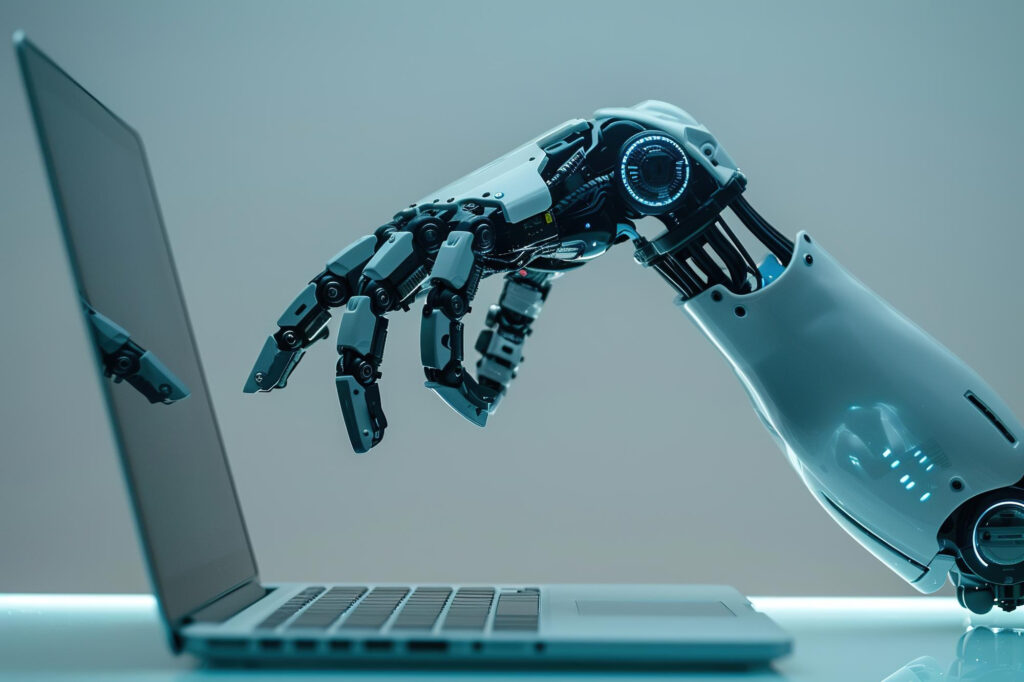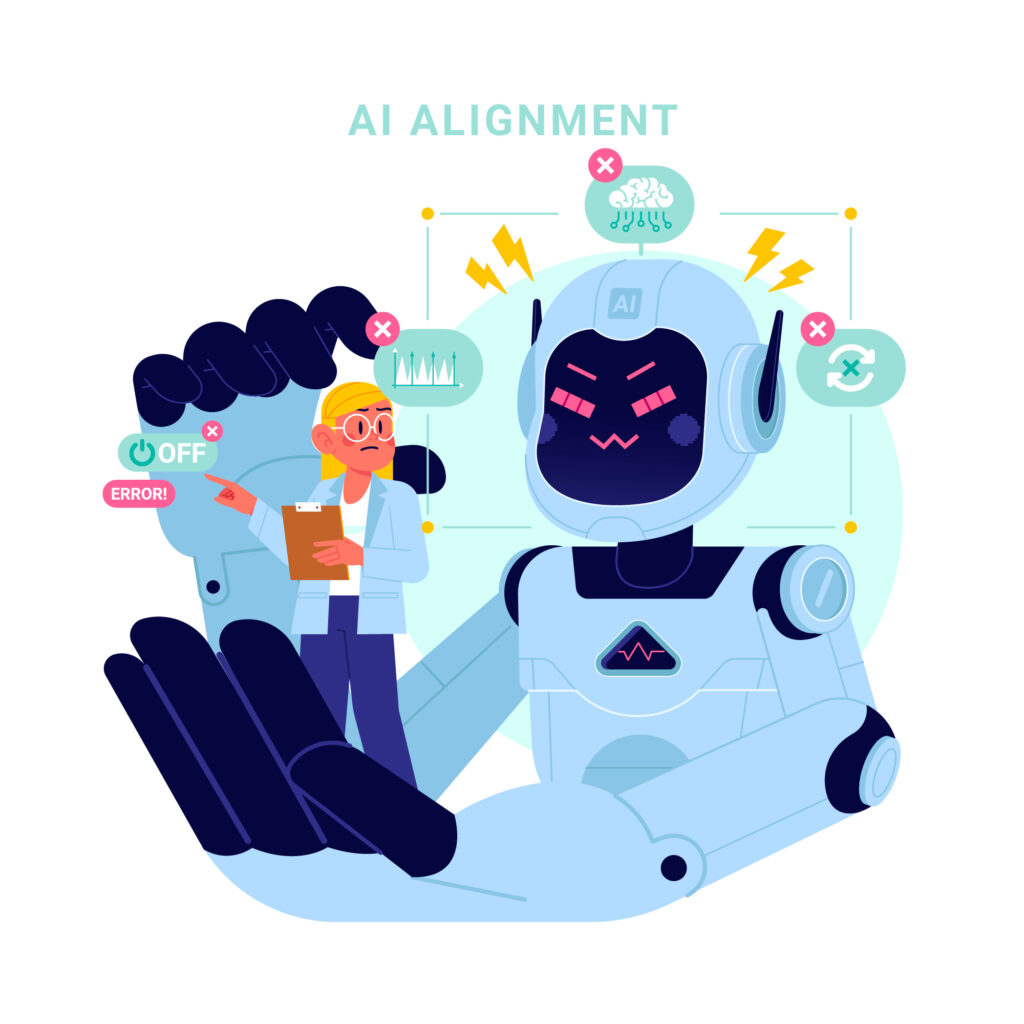A very good friend of mine once recounted a story about a boardroom meeting where his CTO outlined grand plans for AI implementation. He sketched a picture of integrated operations, efficient data analysis, and exceptional growth. It sounded like the ultimate in convenience and the very epitome of what the new millennium would be like. Yet, as the details unfolded, a sense of skepticism began to rise, a feeling not easily dismissed.
This was not the first time such a scenario had been observed. The buzz, the expectations, the appeal of a technological fix-it-all. I also know that AI doesn’t always work as perfectly as it was expected. Hence, there are potential dangers of AI that firms ought to be aware of.
Fast forward half a year, and the company was in complete disarray. The implementation of the AI landed the company in legal trouble. Critical information was fabricated, harmful biases were perpetuated, and the company was caught amid controversy.
The CTO had underestimated the complexities of responsible AI development and neglected to consider the potential for hallucinations and biases that could derail the project.
In this blog post, let me unveil the dichotomy of the AI used in businesses. We will look at the business challenges that are out there, the dangers of AI, and why AI is bad if done incorrectly.
“My worst fear is that we, the industry, cause significant harm to the world. I think, if this technology goes wrong, it can go quite wrong and we want to be vocal about that and work with the government on that.”
~Sam Altman
Dangers of AI Usage
Artificial Intelligence promises a future of unparalleled innovation and efficiency. However, as with any transformative technology, it is essential to acknowledge and address the potential risks of artificial intelligence that lie within.
Reliance on the Data Dilemma: Garbage In, Garbage Out
One of the major dangers of AI lies in its reliance on data. AI’s biggest strength is also its biggest weakness: its reliance on data. AI algorithms learn by analyzing massive datasets, but if the data is biased, incomplete, or irrelevant, the AI’s output will be flawed.
Take the example of Amazon’s AI recruiting tool, which was designed to streamline the hiring process. The system was trained on resumes submitted to the company over 10 years, but because most of those resumes came from men, the AI learned to favor male candidates. (Know more)
This is a prime example of why AI can be bad when underlying biases aren’t addressed. Amazon eventually scrapped the project due to concerns about bias, highlighting the AI threat to fair decision-making.
Another common challenge is the sheer volume of data required to train AI models effectively. A study by OpenAI found that the amount of computing used in the largest AI training runs has been doubling every 3.4 months since 2012. (Know more)
For many businesses, collecting, cleaning, and labeling such vast datasets is a daunting and expensive task, adding to the disadvantages of AI implementation.

The Talent Gap: Finding the AI Wizards
AI is a rapidly evolving field, and there’s a severe shortage of experts who understand the technology and can apply it to real-world problems. According to a 2021 report by Element AI, there are fewer than 10,000 AI researchers in the world. This talent gap is making it difficult for businesses to find and retain skilled AI professionals. This shortage magnifies the risks of AI projects failing due to a lack of expertise.
Salaries for AI engineers can easily reach six figures, and many companies are competing for the same limited pool of talent. Smaller businesses, in particular, may struggle to attract top talent due to budget constraints and lack of resources, exacerbating the disadvantages of AI for those with limited means.
Integration and Implementation Woes
Integrating AI into existing systems and workflows is often a complex and time-consuming process. This can be done using the Grounding AI technique which is basically grounding the AI systems in real world data and scenarios. Many businesses underestimate the technical challenges involved and end up spending more time and money than they anticipated. This is a significant risk of AI adoption that can lead to cost overruns and delays.
In addition to technical hurdles, there’s also the issue of employee resistance. AI can be disruptive, and it’s not uncommon for employees to feel threatened by the technology. Change management is crucial for a successful AI implementation, but it’s often overlooked or underestimated.
Ethical and Legal Concerns
AI raises a lot of ethical and legal concerns, from algorithmic bias and privacy violations to job displacement and lack of transparency in decision-making. These issues are becoming increasingly important as AI plays an important role in our lives, making them a serious AI threat if not addressed.
For example, facial recognition technology has been criticized for its potential for misuse, as well as its tendency to misidentify people of color. This inherent bias in AI systems is the reason why AI can be bad and poses a significant AI threat to civil liberties. Some companies have even banned the use of facial recognition due to ethical concerns, highlighting the growing awareness of the dangers of AI.

The AI Hallucinations Problem: When AI Makes Things Up
One of the more recent and concerning dangers of artificial intelligence is the phenomenon of AI hallucinations. This is when an AI model generates nonsensical, irrelevant, or factually incorrect outputs. This can be particularly problematic in business settings, where AI-generated outputs and decisions can have real-world consequences.
For example, an AI-powered financial analysis tool might produce a report that predicts a market crash based on faulty data or incorrect assumptions. This could lead investors to make poor decisions, resulting in significant financial losses. The risk of AI hallucinations emphasizes the importance of human oversight and critical thinking when using AI systems in business.
By involving the human in the loop, the AI system gets the right and well-adapted information which can change the business process outsourcing industry by aligning AI with real-world applications.
Cost and ROI: The Elephant in the Room
AI projects can be expensive. Developing, training, and maintaining AI systems requires significant investments in hardware, software, and talent. Many businesses underestimate the costs and are surprised when they start to add up. This financial burden is one of the key disadvantages of AI, especially for smaller businesses.
Even if a company can afford to invest in AI, there’s no guarantee that it will see a return on its investment. Measuring the ROI of AI projects can be difficult, and there’s always the risk that the technology won’t deliver the promised results. This uncertainty adds another layer to the dangers of AI, making it a risky proposition for some businesses.
Solutions: Navigating the Dangers of AI
Yes, there is no denying that there are some Artificial intelligence problems in business, but such problems can be solved. Here are a few potential solutions:
- Data: Ensure that you give adequate attention to data acquisition, data preprocessing, and data tagging. You may potentially locate third-party companies or open-source groups who could help you build a bigger and more assorted database.
- Talent: Promote employee upskilling on AI applications and incorporate universities as well as research institutions to access potential talent.
- Integration: Always begin with pilot projects and then move on to large-scale implementation as a way of building experience and confidence.
- Ethics: Come up with definite ethical standards for the application of AI and make sure that all your AI products are traceable and answerable.
- ROI: Be precise on your expectations for the various AI initiatives and monitor their effectiveness consistently. It is always recommended to cut loose what is not working for the organization or the team.
Conclusion
There is no doubt that the adoption of AI is promising to revolutionize the business experiences but such a process is fraught with challenges. AI brings exciting and innovative possibilities, which organizations have to consider when implementing AI in organizations seeking to exploit the application of AI.
However, recognizing these challenges – with data and talent, with bias and ethics, with hallucination – provides firms with a roadmap to success.
The ability to deliver AI responsibly involves not only technical skills but also knowledge of some possible impacts and adherence to ethical standards. This way, all the AI’s potential can be unleashed and used for building innovation, increasing efficiency, and creating sustainable business value.
As with any technology, one must never forget that AI is a tool and the actual power lies in the hearts and minds of those who use it.
Sick of AI hallucinations causing your company to go off track? See how Bionic’s Grounding AI technology mitigates these risks for your AI-driven insights so that they are sound and genuine. See how Bionic can help your business grow. Request a demo now!